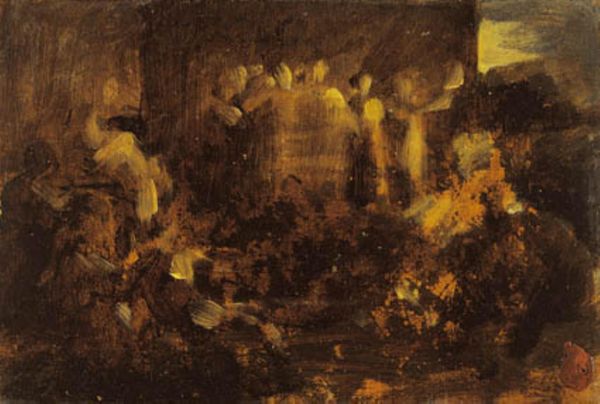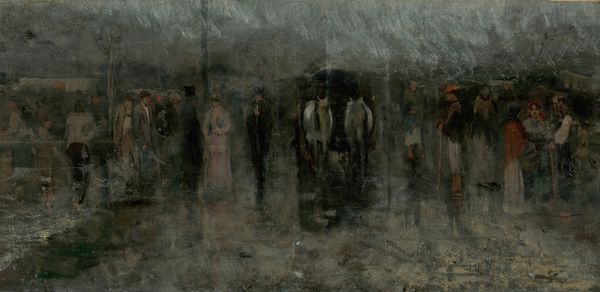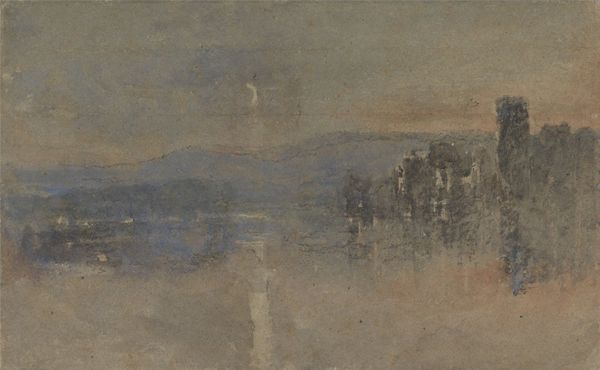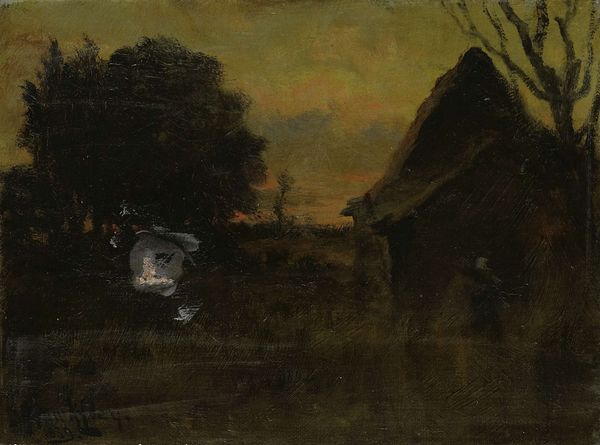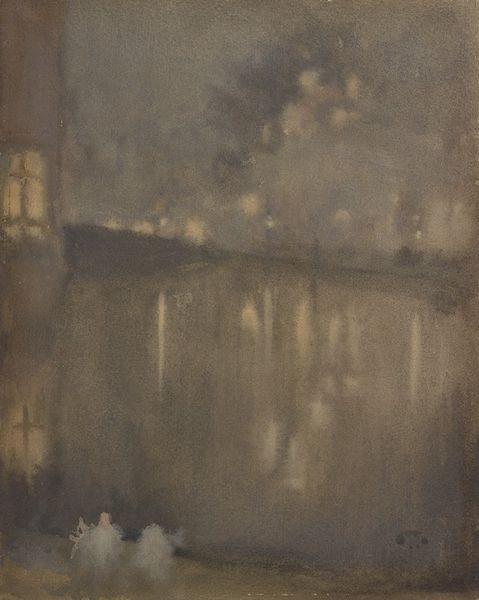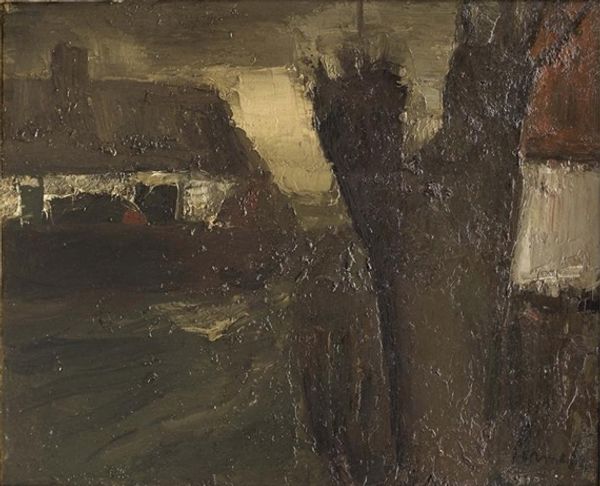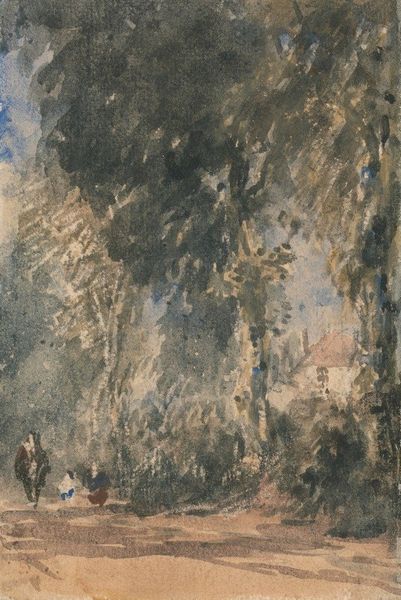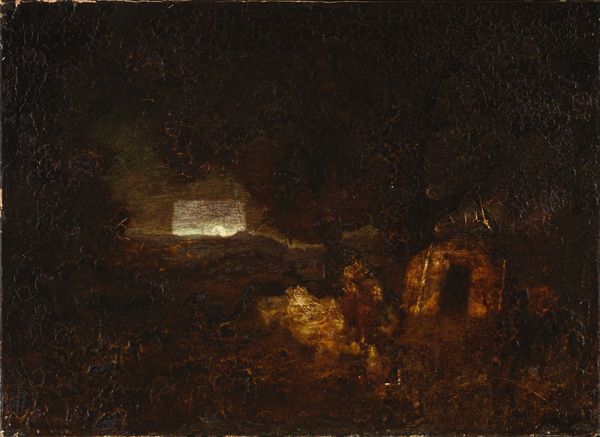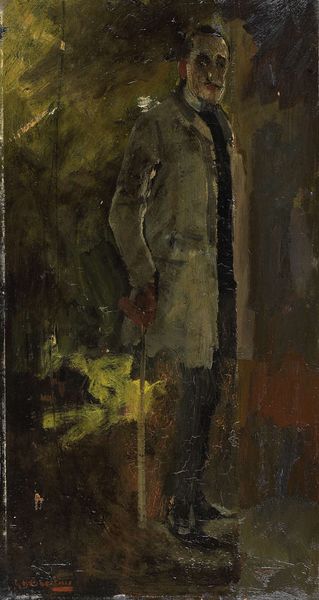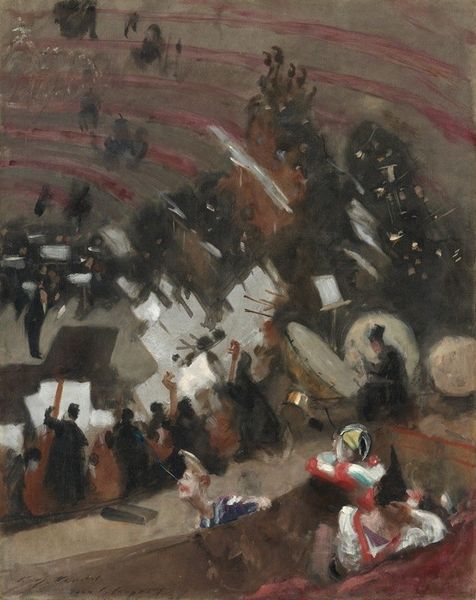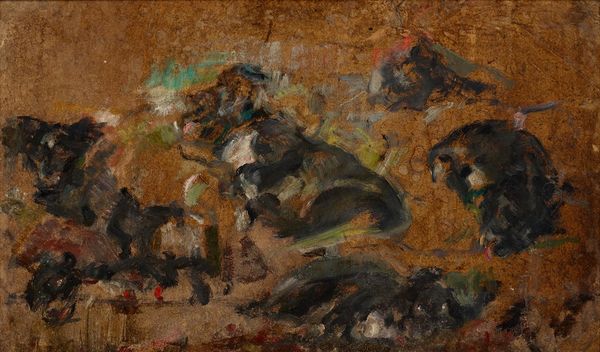
Copyright: Public Domain: Artvee
Editor: This is Adolf Hölzel’s "Landschaftsstudie aus Dachau," painted in 1902. It's an oil painting, and honestly, it strikes me as very subdued and brooding. What do you see in this piece? Curator: I see a landscape, yes, but rendered as a landscape of the mind. Notice how the dark tonality, almost sepia-toned, evokes a sense of looking back, a kind of memory-scape. It's Dachau, but filtered through layers of time and perhaps even personal emotion. Does that resonance strike you? Editor: It does, now that you mention the sense of memory. Is it common to think of landscape paintings of the time through memory? Curator: Often. Landscape isn’t just about representation, it’s also a receptacle for feelings, for a sense of place deeply intertwined with identity. Hölzel, through this near-monochromatic palette, presents a cultural memory as much as a physical one. The lack of vivid color creates a space for reflection. What feelings does that palette suggest for you? Editor: Melancholy, definitely. A sense of things past and perhaps irretrievable. But also, maybe a sense of grounding, being connected to the earth. Curator: Precisely! The earthy tones act as grounding symbols. It ties personal feelings to place. Hölzel wasn't just painting a place, he was exploring its resonance, and our own connection to the landscape. A symbolic mirror held up to the soul, wouldn't you agree? Editor: I think so, yes. Seeing it that way, I understand its complexity more. Curator: I’ve learned that memory influences perception and art. It's interesting how the symbols operate on us in subtle ways.
Comments
No comments
Be the first to comment and join the conversation on the ultimate creative platform.
